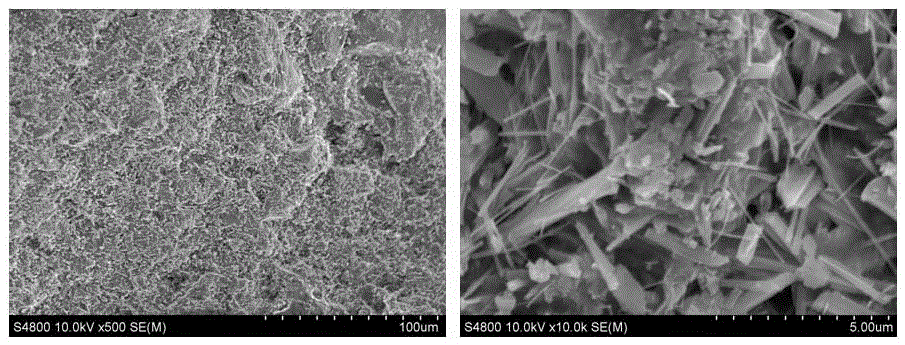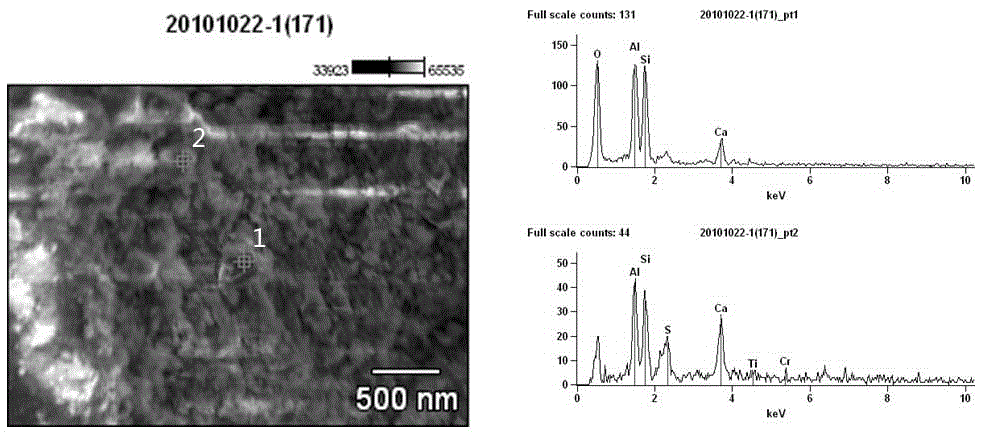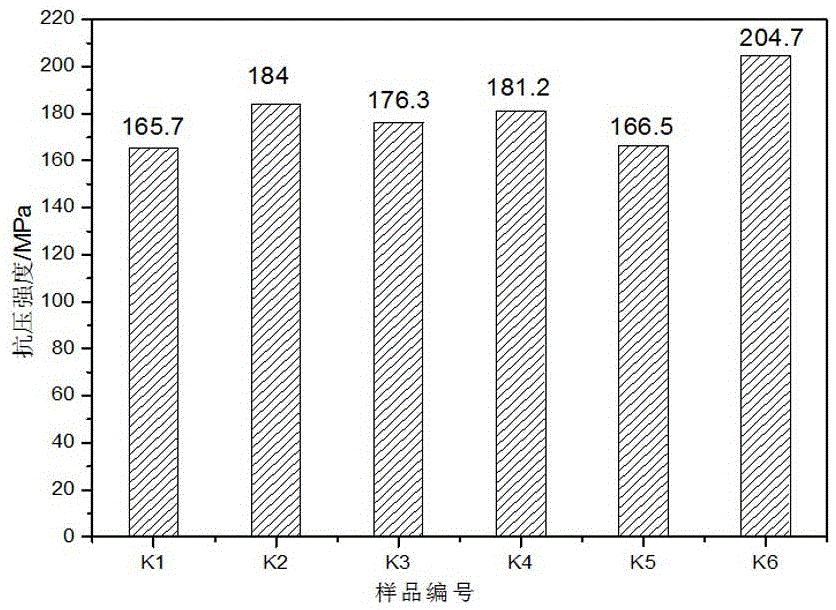Method for preparing building material from metallurgy slag
A technology of metallurgical slag and building materials, applied in the field of comprehensive utilization of metallurgical slag and gypsum materials to manufacture building materials, can solve the problems of low strength and poor durability, achieve high strength, overcome fatal defects, and simple production process
- Summary
- Abstract
- Description
- Claims
- Application Information
AI Technical Summary
Problems solved by technology
Method used
Image
Examples
Embodiment 1
[0044] The specific surface area will be 450 m 2 / kg titanium gypsum 400g (40%), specific surface area 600 m 2 / kg water-quenched granulated blast furnace slag 300g (30%), specific surface area 580m 2 / kgP·O42.5 50g (5%) of cement and 250g (25%) of river sand with a fineness modulus of 2.8 are dry mixed in a mixer for 3 minutes; then add 180g of water (18% of the dry mass of all solid materials) , an additional 1.5g of alkaline activator (accounting for 0.5% of the water-quenched granulated blast furnace slag) was added to the water, and wet mixed for 10 minutes; after standing for 15 minutes, the pressure was maintained at 40MPa for 30s to obtain a super-strong material body; in the concrete curing room 28 days of natural conservation to obtain ultra-high-strength building material K 1 , after standing still for 1h, curing in saturated steam at 75°C for 6h, the super-high-strength building material K 2 , compressive strength see image 3 .
Embodiment 2
[0046] Put 2500g of water-quenched granulated blast furnace slag and 2500g of waste model gypsum into a 500×500mm standard ball mill for grinding for 50 minutes to obtain a specific surface area of 618 m 2 / kg of mixture, take 620g of mixture (wherein water-quenched granulated blast furnace slag accounts for 31% of the total dry basis material, waste model gypsum accounts for 31% of the total dry basis material), and the specific surface area is 680 m 2 / kg P·O4 2.5 cement 80g (accounting for 8% of the total dry basis material) and 300g of river sand with a fineness modulus of 2.8 (accounting for 30% of the total dry basis material) are dry mixed in the mixer for 4min; then add 130g of water (accounting for 13% of the total dry basis material), adding an additional 1.8g of alkaline activator (accounting for 0.6% of the water-quenched granulated blast furnace slag) in the water, wet mixing for 8min; after standing for 30min, keep the pressure at 45MPa for 15s , to obtain a su...
Embodiment 3
[0048] Put 2800g of water-quenched granulated blast furnace slag and 2200g of fluorine gypsum into a 500×500mm standard ball mill for grinding for 65min to obtain a specific surface area of 662m 2 / kg of mixture, take 670g of mixture (water quenched granulated blast furnace slag accounts for 37.5% of the total dry basis material, fluorine gypsum accounts for 29.5% of the total dry basis material), and the specific surface area is 500 m 2 / kg P·O4 2.5 cement 90g (accounting for 9% of the total dry basis material) and 240g of machine-made sand with a fineness modulus of 3.2 (accounting for 24% of the total dry basis material) are dry mixed in the mixer for 3min; then add 200g of water (accounting for 20% of the total dry basis material), add an additional 1.4g of alkaline activator (accounting for 0.47% of the water-quenched granulated blast furnace slag) in the water, wet mixing for 9min; after standing for 30min, keep the pressure at 45MPa for 50s , to obtain a super-strengt...
PUM
 Login to View More
Login to View More Abstract
Description
Claims
Application Information
 Login to View More
Login to View More - R&D
- Intellectual Property
- Life Sciences
- Materials
- Tech Scout
- Unparalleled Data Quality
- Higher Quality Content
- 60% Fewer Hallucinations
Browse by: Latest US Patents, China's latest patents, Technical Efficacy Thesaurus, Application Domain, Technology Topic, Popular Technical Reports.
© 2025 PatSnap. All rights reserved.Legal|Privacy policy|Modern Slavery Act Transparency Statement|Sitemap|About US| Contact US: help@patsnap.com



